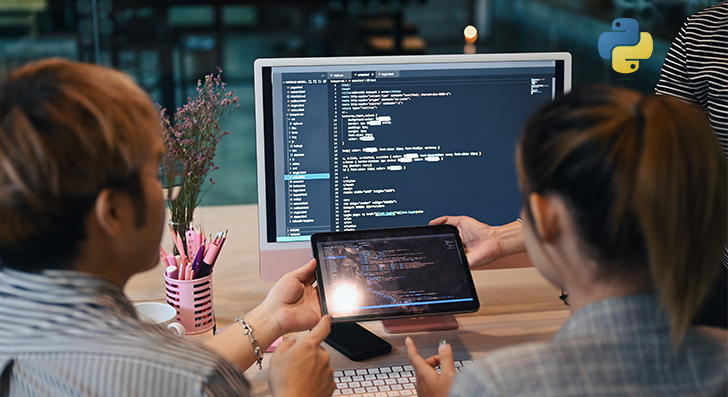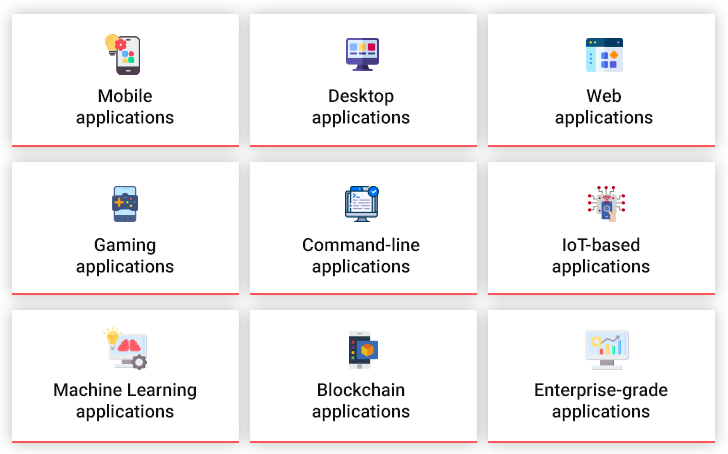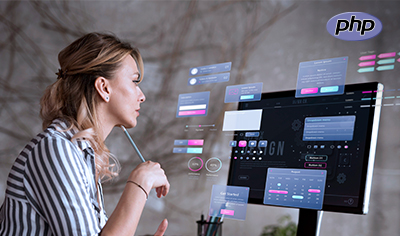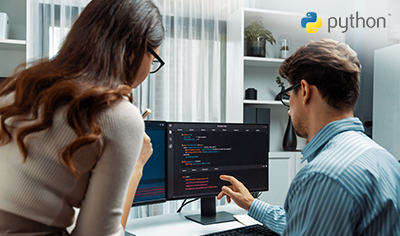With the projection of the global mobile application market size to reach 2.8 trillion AED by 2030, businesses of all sizes are capitalizing on this thriving industry. No wonder, why a large number of businesses have jumped on the bandwagon of Python application development.
Though Python has been around for over three decades, it still dominates other programming languages. The reason for it to outperform in the overly crowded and competitive application development market is its adaptability, extensive third-party integration capabilities, a wide repertoire of free libraries, and a robust built-in structure. According to the PYPL PopularitY of Programming Language Index, Python not only grew the most in the last 5 years but also defeated the original coding language – Java.
Furthermore, Python secures the first position in the TIOBE index report of 2024, making it the most popular programming language. What’s more interesting about Python is that this general-purpose programming language is used by 45.32% of professional developers as per the recent developer survey conducted by Stack Overflow.
Today, Python is majorly used as a backend technology for the development of mobile applications, desktop and web applications, gaming applications, command-line applications, IoT-based applications, Machine Learning applications, Blockchain applications, and enterprise-grade applications. Besides application development, Python can also be used for software development, website development, financial analysis, web scraping, automation, data visualization and analytics, and more.
Types of Applications You Can Build with Python
Python for Application Development – Analysis
As disruptive technologies continue to transform the IT landscape, businesses are faced with the critical decision of choosing the right programming language for their application development endeavors. Amidst a plethora of options available, Python has emerged as a game-changer for application developers and businesses alike. Renowned for its simplicity, flexibility, and readability, Python provides organizations with a strategic advantage of responding quickly to changing market demands and propelling their businesses to new heights of success in the ever-evolving digital landscape.
The important thing to note here is that Python is an interpreter language and major mobile operating systems (OS) such as iOS and Android don’t support interpreter-type languages. This indicates that choosing Python standalone may not be an ideal option for application development. However, this doesn’t mean that this interpreter language can’t be used for developing iOS or Android mobile applications. It simply means that the interpreter code needs to be translated using Python GUI frameworks before deploying it natively. In other words, Python GUI frameworks bridge the gap between the interpreter code and the native mobile application requirements. With the help of these translator bridges, the interpreter code can be read easily by the native application systems. Now, let’s dive deep into the frameworks that facilitate Python applications to work seamlessly on mobile devices with a native look and feel.
Time-Tested Strategies for Successful Mobile Application Development
Best GUI Frameworks for Python Application Development
Until a few years ago, application development using Python used to be challenging and time-consuming. With the advent of GUI Frameworks, it has become simpler to craft innovative and scalable mobile application solutions without performing complex and routine programming processes. Listed below are some top Python GUI frameworks to expedite the process of application development in Python.
1. Kivy
Kivy is a popular open-source GUI framework that is widely used for developing mobile applications with immersive user experience features, modern design elements, and unparalleled performance. It uses innovative user interfaces that easily recognize complex gestures and is based on multiple Python libraries such as Cairo, GStreamer, and PIL. It has a built-in modern graphics engine capable of handling high GPU workloads and facilitates the quick development of visually appealing and highly interactive solutions such as gaming applications, desktop applications, and more.
2. BeeWare
BeeWare is a comprehensive suite of tools and libraries that facilitates the development of desktop and native mobile applications. This robust toolkit converts the interpreter code into a compatible format enabling enterprises to use a single codebase for iOS, Windows, Linux, and Android mobile application development platforms. The best part of this GUI framework is that it comprises native tools for each mobile development platform. This means that the UX of Python-based applications will be no different from mobile applications programmed using Java for Android and Swift for iOS. Additionally, BeeWare comes with Rubicon, a library that allows Python code to work with Java libraries. Whereas, Rubicon-ObjC is a library that bridges the gap between Python and Objective-C by allowing users to execute Objective-C libraries on iOS and macOS using the Python code.
Python for Enterprise Application Development
3. Django
This open-source framework comes with a suite of built-in tools and features to bring application ideas to life. Renowned for its ease of use, scalability, and security, Django has become a coveted choice for application development using python. Today, many large and reputed enterprises, including Pinterest, Instagram, Clubhouse, Mozilla, Disqus, and more are leveraging the potential of this framework. Furthermore, this framework takes cognizance of security issues seriously whilst expediting the process of application development in Python.
4. CherryPy
CherryPy is another popular object-oriented Python framework that is renowned for its extensible plug-in architecture and is widely used for developing customizable applications with flexible modules. It has integrated support for native extensions and plug-ins, code translation, profiling and testing, etc. Furthermore, it comes with built-in tools for static content, sessions, caching, encoding, authentication, and more. Some popular applications using the CherryPy framework include Netflix, Hulu, and Learnit.
Benefits of Using GUI Frameworks for Python App Development
I. Consistency
GUI frameworks provide a cohesive user experience across different devices and screen sizes by ensuring consistency in design and functionality.
II. Cross-platform Compatibility
Many GUI frameworks (such as BeeWare, Kivy, Tkinter, and PyQt) support cross-platform development, enabling developers to craft applications that run across multiple operating systems, including Windows, macOS, Linux without significant modifications.
III. Scalability
Many GUI frameworks offer scalability as the project grows, making it ideal for both small and large-scale application development projects.
IV. Code Reusability
GUI frameworks offer code reusability, which means that the components of GUI can be reused across different application development projects, saving significant time and effort.
V. Faster Development
GUI frameworks come with pre-built components and tools that play a crucial role in accelerating the development process, enabling faster application prototyping and iteration.
VI. Integration with Other Python Libraries
GUI frameworks offer seamless integration with a range of Python libraries, enabling more comprehensive application development.
Summing Up
Python equips businesses with all the tools, libraries, and frameworks they need to reduce application development time. Its extensive library ecosystem, clean syntax, versatility, and strong community support make it a coveted choice to cater to a wide array of application development requirements. If you also want to meet the ever-changing demands of the modern IT landscape, it’s considered wise to seek consultation from a Python app development company.
Case in Focus
Based out of Qatar, the client is one of the coveted digital agencies working for big media houses. The client sought a video processing application capable of accurately detecting the facial expressions of individuals. However, the challenge entailed building an algorithm that could process the entire video on a frame-by-frame basis. The client partnered with Damco to develop a robust Python-based app engine for video and image processing, efficiently handling vast quantities of media while generating a comprehensive database of facial expressions. As a result, the client revenue increased by 48%, profitability by 23%, and valuation by 9.8 million Qatari Riyal.







